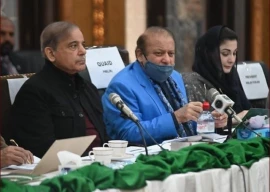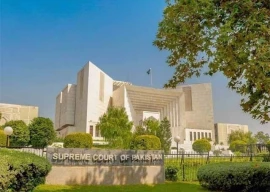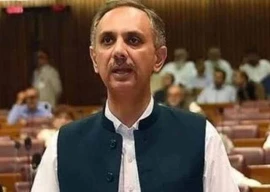
The demonstrations were led by PKAC Chairman Mufti Obaidur Rehman. Committee members shouted slogans against Pakistan Tehreek-e-Insaf (PTI) government and demanded the cancellation of the notification to split the region into Lower and Upper Kohistan.

Speaking on the occasion, Rehman said the government has announced the decision without accounting for the wishes of the people. “This is an attempt to appease PTI’s provincial adviser and MPA from PK-61, Abdul Haq Khan,” he added.
According to Rehman, the party declared Pattan tehsil as the headquarters of Lower Kohistan on Haq’s advice, something the people of Palas tehsil did not accept.
“PKAC will continue its protest unless the notification is cancelled,” he said. “The action committee will extend its protest to other cities of the province and subsequently to Bani Gala in Islamabad.”
Earlier, in February, the PTI government issued a statement declaring Lower Kohistan the seventh administrative unit in Hazara division, comprising two tehsils – Pattan and Palas. Pattan was declared the headquarters of the district.
One week later, tribes from Palas opposed the decision to declare Pattan as the district headquarters. They launched a protest and challenged the decision in the Abbottabad bench of the Peshawar High Court (PHC).

The PHC stayed the bifurcation and asked the newly-posted deputy commissioner and DPO to stop working. However, on July 24, the bench—headed by Justice Waqar Ahmed Seth and Justice Irshad Qaiser—upheld the provincial government’s decision to establish Lower Kohistan’s headquarters in Pattan.
Kohistan spreads over an area of 2893 square miles and has four tehsils – Dasu, Kandia, Pattan and Palas.
According to the 1998 census, the district has a population of 472,570 – a figure which is likely to have increased over the years. The literacy rate in Kohistan is below 20%.
The district was created in 1976 during the Pakistan Peoples Party (PPP) government. However, the region was largely neglected by the government despite being one of the few regions with a large number of natural resources. It has two main hydropower projects – Dasu Hydropower Project and Diamer Bhasha dam – which are likely to be completed over the next five years.
Published in The Express Tribune, December 15th, 2014.




























1714129906-0/Clint-Eastwood-(1)1714129906-0-270x192.webp)






COMMENTS
Comments are moderated and generally will be posted if they are on-topic and not abusive.
For more information, please see our Comments FAQ